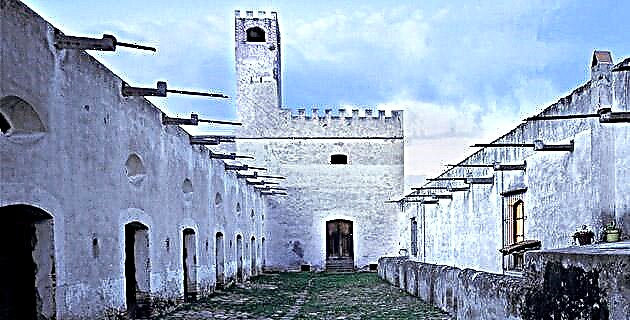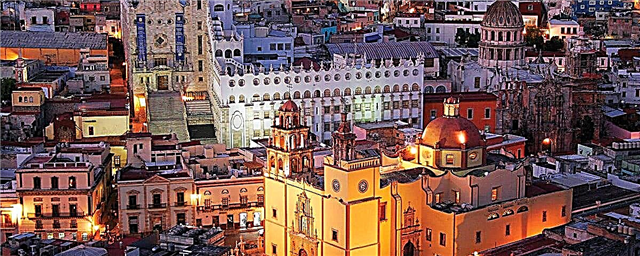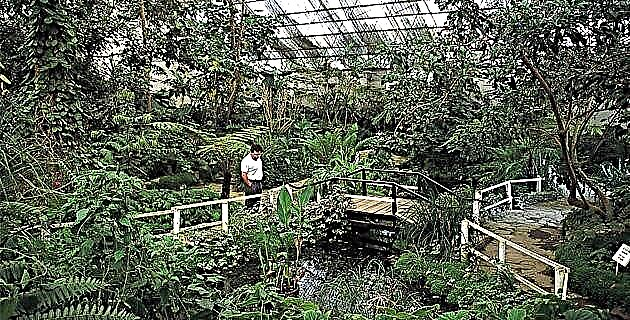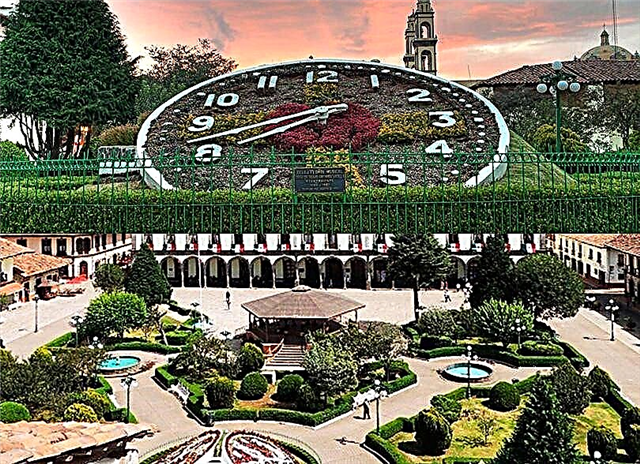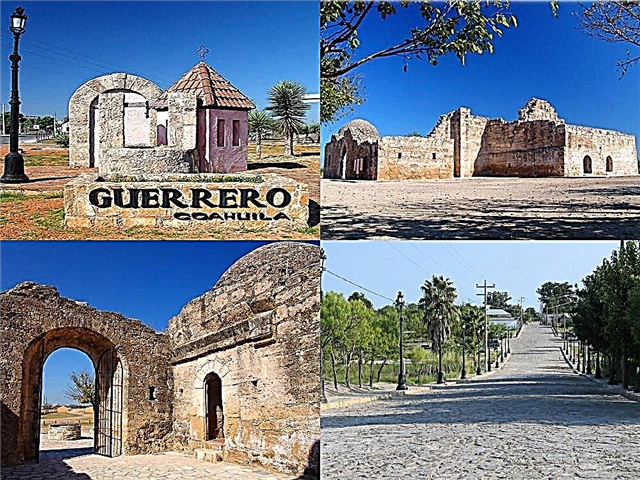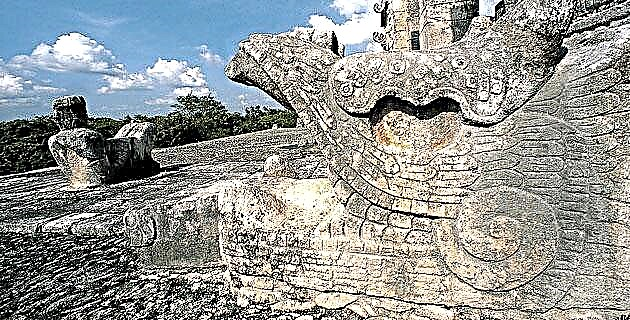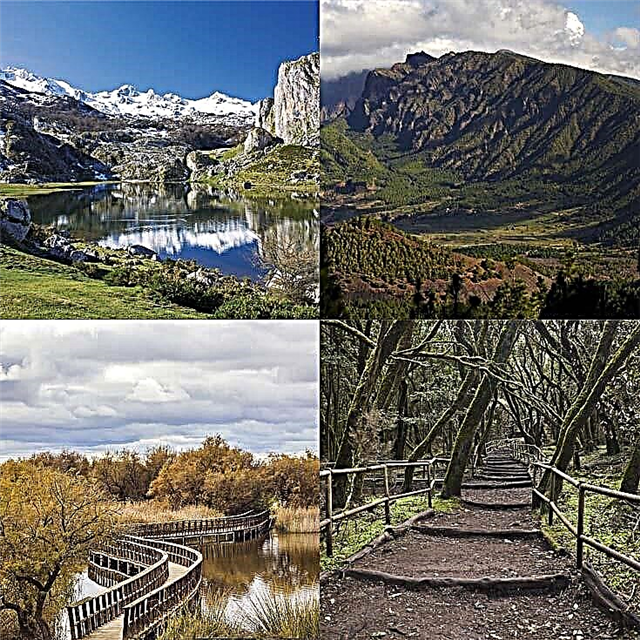Spain has wonderful natural extensions on land and sea, and in all its cardinal points. Join us to know these 15.
1. Picos de Europa
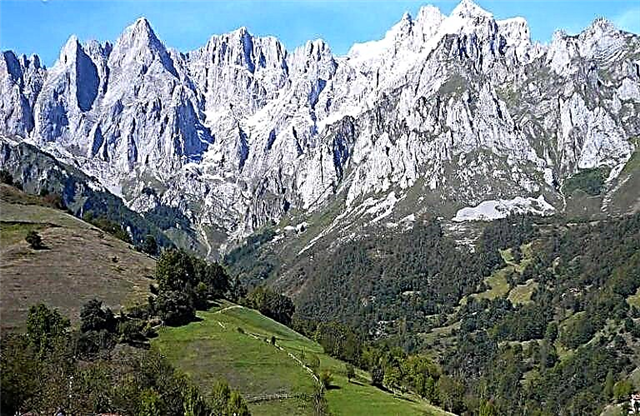
Spring and summer are a hymn to life in the peaks. Its three mountainous massifs offer a beautiful natural diversity of elevations, valleys, rivers and lakes, in perfect harmony with the hand of its inhabitants, who live mainly from livestock. The most sympathetic local in this space that occupies the territories of León, Cantabria and the Principality of Asturias, is the Cantabrian chamois, a bovid capable of making the most horrifying jumps on the steep slopes of the peaks. Make sure you try the exquisite cheeses, especially Cabrales, Picón Bejes-Tresviso and Gamonéu.
2. Lakes of Covadonga
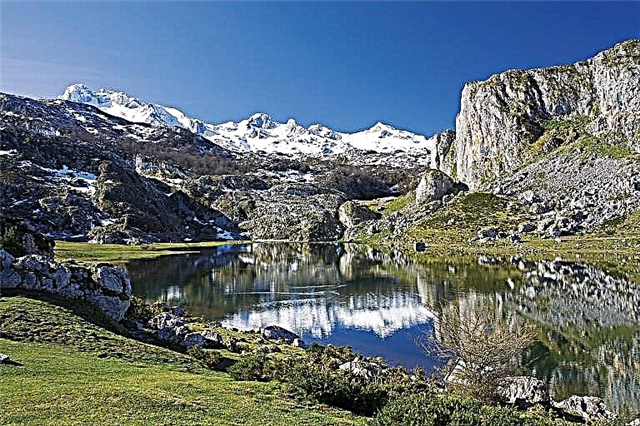
In the western massif of the Picos de Europa there are three small lakes of glacial origin, the Enol, the Ercina and the Bricial, a group that has become internationally known for being for some years the point of arrival of the most mountain stage. lasts from the Cycling Tour of Spain. Great cycling luminaries such as the French Laurent Jalabert, the Colombian Lucho Herrera and the Spanish Pedro "Perico" Delgado, triumphed exhausted and eager to go to rest while watching the beautiful lakes. You can go without being a professional cyclist and enjoy its beauty in a relaxed way, watching the cattle and horses graze on its banks.
3. The Enchanted
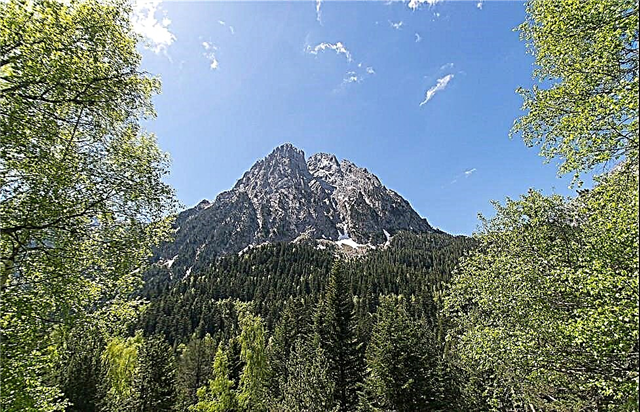
Once, two Catalan hunters skipped Sunday mass because they wanted to hunt a roe deer. The legend indicates that as punishment for absent from the rite they were turned into stones. Hence the name of these two peaks that rise for more than 2,700 meters. They constitute one of the main challenges in Spain for practitioners of climbing sports. A magnificent view of the elevations can be had from Lake San Mauricio, a body of water located at an altitude of 1910 meters, which receives the waters of several rivers and streams of the beautiful and wild place.
4. Bardenas Reales
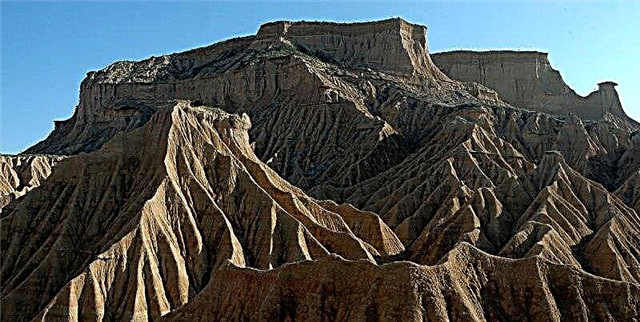
If you are a lover of desert landscapes, you have to go to Navarra to see the Bardenas Reales. These natural and biosphere reserves are curious geographical formations such as hills, plateaus and ravines, which the millenary passage of water has sculpted on the ground, eroding the chalky and clay soils. Seasonal rivers run along the bottom of the ravines and continue to do their ancient carving work with each season. One of its most striking configurations is the castildetierra, which looks like a huge bare lighthouse in the middle of the arid horizon. In the inhospitable landscape live Aleppo pines, Kermes oak, steppe birds, raptors, reptiles and other brave ones.
5. The Caldera de Taburiente
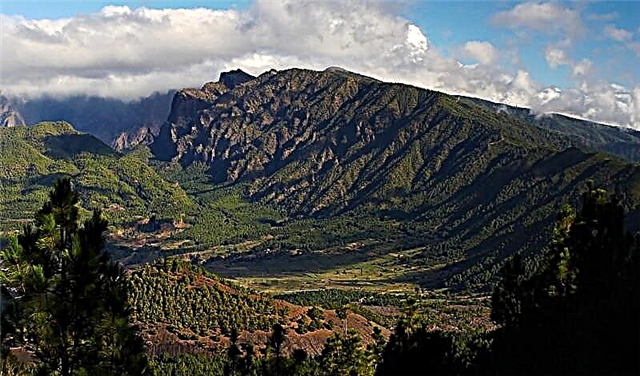
It is a national park and world biosphere reserve located on the Canary Island of La Palma. This great depression is one of the most beautiful and wild volcanic ecosystems in Spain, with its springs and streams that form an infinity of waterfalls of different heights and capricious shapes. Inside the caldera grows the typical Canarian forest, the laurel forest, formed by a great variety of trees, shrubs, climbing plants and herbs. The most intimidating inhabitants are the wolf spiders and centipedes, although the environment is calmed by the wild pigeons, the blackcap and blackbirds. A recent local is the Rui, a Maghreb ram introduced to various Spanish ecosystems in the 1970s.
6. Daimiel Tables
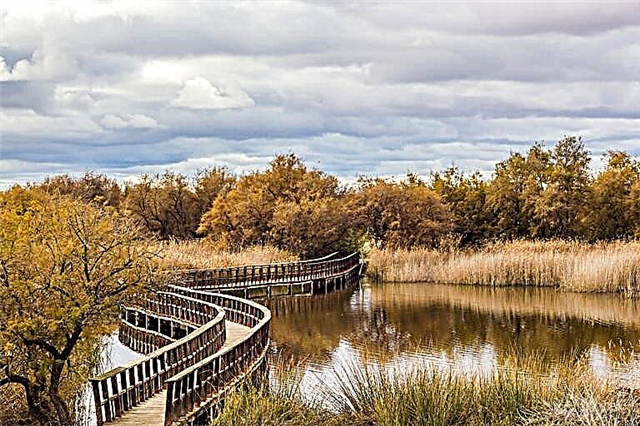
The river tables are the ecosystems that are formed especially in the middle courses of the rivers when they overflow in lands with little slopes. This Spanish wetland located in the province of Ciudad Real, between the municipalities of Villarrubia de los Ojos and Daimiel, is formed by the confluence of the waters of the Guadiana and Ciguela rivers, and is one of the most peculiar fauna and flora reserves in the country. Among the reed beds there are mallards, gray herons and red ducks. In the waters, native fish such as the cachuelo and the barbel, try to survive against the pike, an invader introduced by man. One of the main symbols of Daimiel, the white-legged crab, is about to become extinct.
7. Cabrera Archipelago
This maritime-terrestrial national park located in the Balearic archipelago is one of the best preserved virgin areas in the entire Mediterranean Sea, favored by its isolation. It is an important reservoir of birds and endemic species and holds the category of protected area by different regional, national and international entities. You can access the park by boarding one of the swallows that make the journey from the coastal towns of Colonia de Sant Jordi and Portopetro. It is a place to observe the beauty of the landscape, practice underwater sports, go hiking and visit the caves inland.
8. Monfragüe
It is a park in Cáceres bathed by the waters of the Tagus and Tiétar rivers. In one of the main elevations of the park the ruins of the Castle of Monfragüe are preserved, a fortress built by the Arabs during the 9th century. Another attraction is the Salto del Gitano, a viewpoint located in the municipality of Torrejón el Rubio. From the top of the rock you can enjoy a spectacular view, with the vultures flying overhead and the Tagus running below. Monfragüe is a paradise for birds. Eagles, vultures and storks nest in its escarpments and constantly patrol the clear sky, ideal for observing twilight and starry nights.
9. Cabañeros
The shepherds and charcoal makers of the Montes de Toledo built a hut with materials from the environment, as a temporary refuge to rest and shelter. This is where the name of this Toledo park of almost 41,000 hectares comes from. It has several visitor service points, from where you can organize a guided tour, which can be on foot or in an all-terrain vehicle. One of the most frequented places is La Chorrera, a 18-meter waterfall near the town of Los Navalucillos. The typical plant of the park is the blond heather, which blooms in a pretty pink color. The park is also home to the imperial eagle, a threatened species.
10. Arribes del Duero
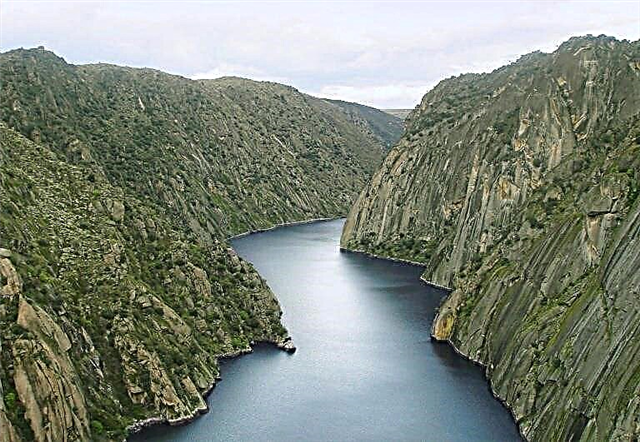
This immense natural park of more than 100,000 hectares borders the border with Portugal along the Spanish provinces of Salamanca and Zamora, in the Autonomous Community of Castilla y León. In Leonese Romance speech, the arribes are the valleys and gorges produced by the erosion of the rivers. Along or near the park there are a large number of picturesque towns that offer a particular tourist interest, such as Fermoselle, San Felices de los Gallegos and Vilvestre. You can also visit archaeological sites and caves with cave paintings. Throughout the geography of the park there are viewpoints distributed to admire the immensity of the landscape. You also have thematic museums alluding to the main products of the region (oil, wine, flour, textiles) and you can visit craft and wine fairs.
11. Ordesa and Monte Perdido
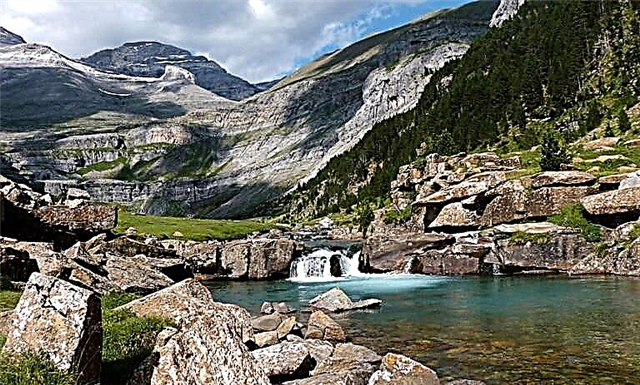
It is an Aragonese national park of about 16,000 hectares that is a World Heritage Site. It is a Pyrenean territory of massifs, valleys, glaciers and rivers located at more than 3,300 meters above sea level. Its maximum summit is Monte Perdido, which at 3,355 m is the highest calcareous peak in Europe. In its natural spaces you can practice your favorite mountain entertainments and its rustic villages are ideal to rest and taste the delicious food of Aragon. One of the most popular excursions is the route to the Cola de Caballo waterfall, so called because the water falls on an almost vertical slope, reminiscent of a white horse's mane.
12. Garajonay
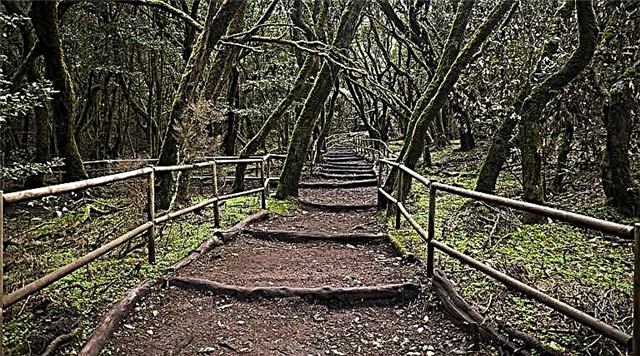
This national park and World Heritage Site covers 4,000 hectares on the Canary Island of La Gomera. Its great treasure is the main European humid forest of evergreen species, the laurel forest. Another attraction is the Roque de Aguando, a volcanic neck that is the main geographical reference of the island.
The name of the park comes from a love legend that is a kind of Romeo and Juliet in the Spanish version, starring Gara and Jonay, a princess and a prince who committed suicide due to their parents' rejection of their relationship. So if you and your girlfriend are in love and can't go to Verona, Garajonay is a great place for a well-set getaway.
If your plan is more to contemplate the landscape, enjoy observing some endemic species of the Canary archipelago, such as the rabiche pigeon, the natural symbol of La Gomera.
13. Atlantic Islands of Galicia
This park spans the Galician islands of Cíes, Ons, Sálvora and Cortegada. Cíes has some of the richest and most varied marine ecosystems in Galicia. It was greatly affected by the sinking in 2002 of the tanker Prestige, after which he began a slow recovery. Ons is located at the entrance to the Pontevedra estuary and is experiencing an intense tourist boom. At its highest point there is a lighthouse commissioned in 1865, which is a beautiful monument and one of the most far-reaching on the entire Spanish coast. In the city of Vigo there is a museum whose unique theme is the Atlantic Islands.
14. Sierra de Guadarrama
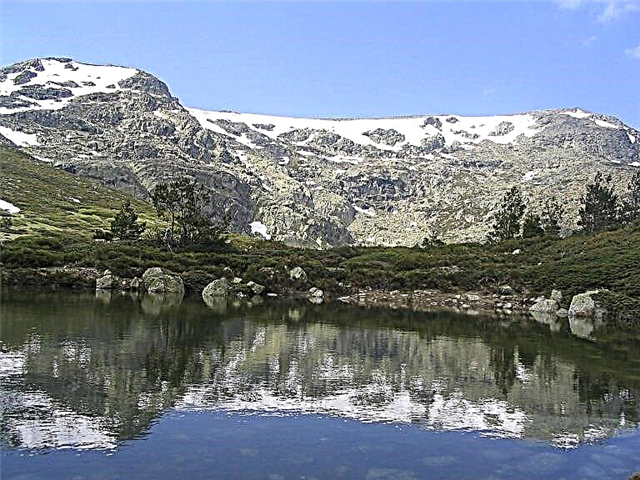
It is the only Mediterranean high mountain ecosystem in the entire Iberian Peninsula and the closest place for locals to practice any sport or alpine entertainment. Its flora is so varied that it has about 1,300 species of 30 types of vegetation and its fauna is so rich that it encompasses 45% of all Spanish animal species and almost 20% of the European ones. Some areas of great interest are the mountain of La Maliciosa, the Valley of La Barranca; the cliff of El Yelmo, a pink granite rock very frequented by climbers and the Puerto de Navacerrada, a ski resort and mountain pass. Others are La Pedriza, an immense mass of granite, and the Lozoya Valley.
15. Teide National Park
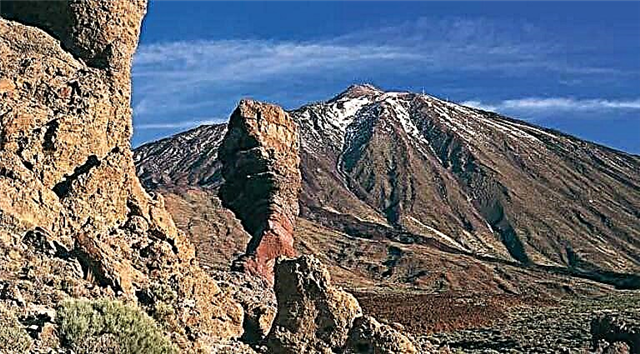
This World Heritage Site is the only terrestrial natural monument that was selected in the national contest that chose the 12 Treasures of Spain. It extends for 190 square kilometers in the highest area of the Canary Island of Tenerife, including the Teide volcano, the highest peak in Spain (3,718 m) and the most important natural lighthouse in the Atlantic Ocean. It is the most visited natural park in Europe, receiving more than 3 million tourists a year.
Within each of these parks there are countless treasures to discover and enjoy. We hope that soon we can continue this pleasant journey through the beautiful places of Spain and the world.

